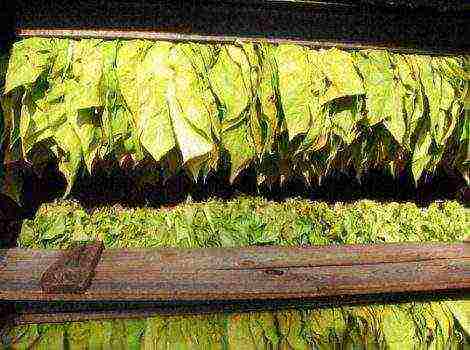Content
3 parts: Planting jasmine Jasmine care Harvesting jasmine
The star-shaped jasmine flowers have an exotic sweet scent that permeates the air on warm evenings. Jasmine vines or bushes (depending on the variety) bloom all summer. Jasmine buds can be dried and added to tea for aroma and healing effects. Go to the first step to learn how to plant, grow and harvest jasmine.
Part 1 Planting jasmine
- Choose a jasmine variety.
There are over 200 varieties of jasmine, each with its own characteristics. Some are evergreen, while others are deciduous. Some have vines, others grow as bushes. Some are so delicate that they can only grow at home, while others are hardy. Buy a jasmine variety that suits your needs. You can buy ready-made seedlings in pots or grow your own from seeds. The following jasmines are the most common:
Jasminum officinale (summer jasmine) From bright sun to partial shade; in mild climates can grow outdoors; otherwise grown at home White flowers in the form of stars; the vine is frost-resistant, which makes the variety popular in many regions. Jasminum nudiflorum (winter jasmine) From bright sun to partial shade; grows outdoors in most regions Yellow flowers; undemanding in care; covers the ground well Jasminum parkeri From bright sun to partial shade; in mild climates can grow outdoors; otherwise grown at home Yellow flowers; grows in a bush. Jasminum fruticans From bright sun to partial shade; in mild climates can grow outdoors; otherwise grown at home Yellow tubular flowers; evergreen bush. Jasminum sambac From bright sun to partial shade; home grown, unless you live in a tropical climate Fragrant flowers can be used to create delicious teas; most regions require a controlled home environment. - Find the right place for your jasmine.
Each jasmine variety requires different cultivation conditions, so do your research and determine what conditions your plant needs. For the jasmine to thrive, it should be provided with sufficient sunlight and the correct temperature. Consider the following when choosing a location for jasmine:
- What kind of lighting does he need? Most jasmines require partial shade or full sun, although several varieties allow for shade.
- Is the plant hardy in your climate? Decide if your chosen jasmine will survive outdoors, or if it is better to keep it in a pot at home, where you can control the temperature and humidity. If you are planting jasmine outdoors, then you should find the warmest place for it.
- How much space does a jasmine need? Some varieties of vines outgrow walls and fences, others creep along the ground to create a carpet, and still others grow as bushes. Choose a location according to your type of jasmine.
- Prepare the soil for planting.
Most jasmine varieties thrive in fertile, well-drained soil. Whether you're planting an outdoor jasmine or potted jasmine, prepare the ground by covering it with a 5-cm layer of compost. This will ensure healthy jasmine blooms during the growing season.
- If you are planting jasmine outdoors, check if there is good drainage in the area. Dig a hole and fill it with water. If the water quickly leaves the hole, then the soil drainage is good. If the water stagnates and leaves slowly, choose a different planting site.
- Plant jasmine.
Remove the seedling carefully from the container and water the root ball. Dig a hole the size of a root ball and plant the plant in it. Lightly compact the soil around the plant to help it settle down. Add more soil as needed to keep the plant upright.
- Although it is easiest to buy jasmine seedlings, it is possible to grow jasmine from seeds. Jasmine seeds have low germination and require special care, depending on their variety. In most cases, you can germinate seeds at home in pots with a special germination mixture, and then plant the seedlings outdoors after the spring frost.
- Another way to propagate jasmine is to use half-ripe cuttings of adult plants. In mid-summer or autumn, cut 15 cm branches from a healthy plant. Prepare a pot of soil and compost and stick the cuttings into it. Keep the pot in a sunny window during the winter, water well, and transplant the plants in the spring.
Part 2 Jasmine care
-
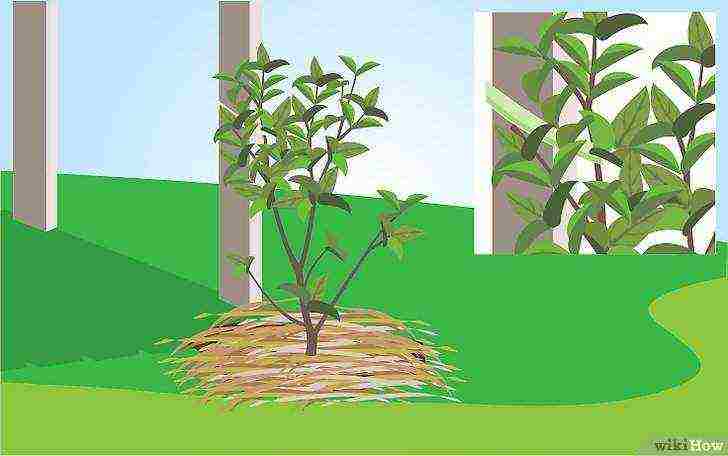 Support the curly jasmine.
Support the curly jasmine.
Many varieties of jasmine need support for healthy growth. Place a tall peg or mesh support a few centimeters from the base of the jasmine, gently wind the plant around the support as it grows. In the end, it itself will begin to braid the support. If you planted jasmine against a wall or fence, guide it upward until it continues to grow in that direction.
- To ensure the fixation of jasmine on the support, you can use ropes, loosely tying the shoots to the support. Remove the strings when the vine hardens.
-
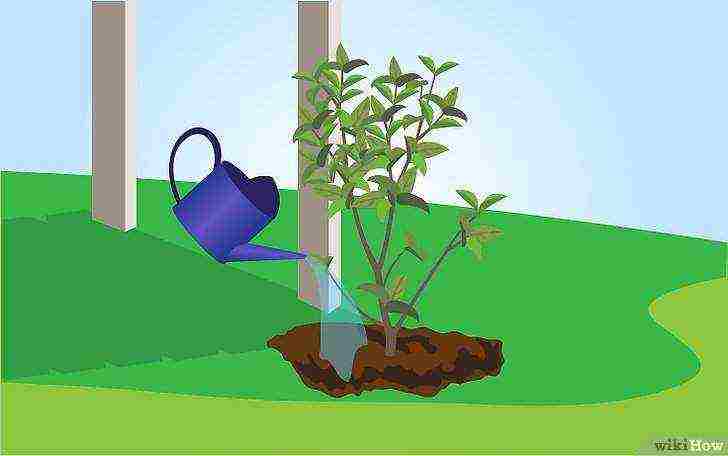 Maintain a humid environment.
Maintain a humid environment.
Water the ground around the jasmine throughout the growing season to keep it moist, not soggy. A good rule of thumb for watering jasmine is to water only when the soil begins to look and feel a little dry. If your jasmine is growing in a pot, it should be watered with an adequate amount of water once a day.
- Water the bottom of the jasmine to keep the leaves from getting wet. If water remains on the leaves, the sun will burn them out during the hottest part of the day.
- For home-growing jasmines, be mindful of the humidity level in the air, as well as the moisture content of the soil. The pampered varieties of jasmine need a moisture level in the range of 30–45%. Use a humidifier or spray your plant with a spray bottle regularly.
-
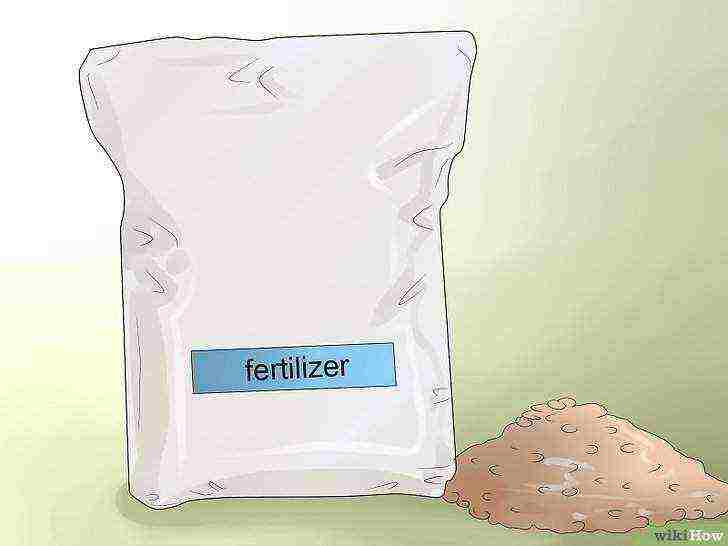
Fertilize your jasmine once a month. During the growing season, monthly fertilization will keep it blooming. Spray a balanced water-soluble fertilizer around the base of the jasmine. Alternatively, you can renew the 2.5 cm compost layer around the plant. Be careful not to damage the roots.
-
 Prune jasmine.
Prune jasmine.
During the growing season, remove dead leaves, flowers, and stems by pinching or pruning flush with the main stem. Keep an eye on the type of plant by removing stray shoots. Strategically pruning branches will allow you to control the shape of the vine. Shrubs and homemade jasmine need less pruning to maintain their shape.
- Do not prune before or during flowering as this may stop it. Wait for the end of flowering.
- To maintain the bushy shape of the jasmine, you can cut the stems one third after flowering. The bush will become more lush next year.
-
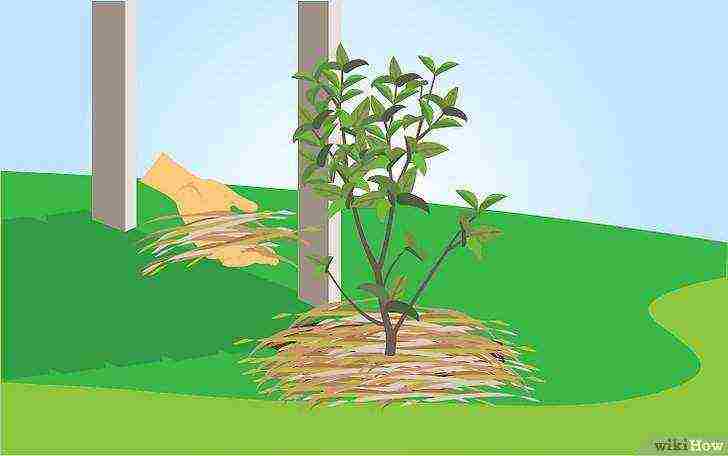 Mulch the jasmine in the fall.
Mulch the jasmine in the fall.
To protect the jasmine for the winter, spread a layer of pine needles, manure, or garden compost around the base. This will prevent the root system from completely freezing, and the jasmine will be able to start growing when it gets warm.
- If you grew jasmine outdoors in a pot, you can bring it indoors for the winter instead of mulching.
- Jasmine growing all year round at home does not require mulching. However, it is important to keep it in a sunny room with a constant temperature of 15.5-24 degrees.
-
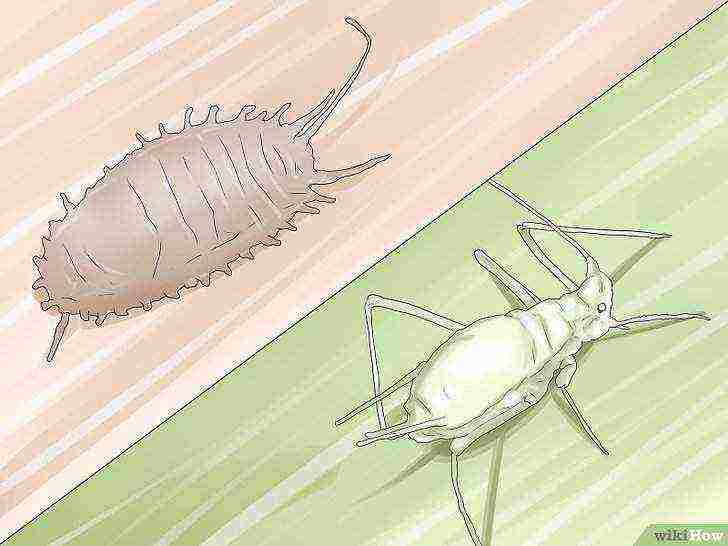 Pay attention to pests.
Pay attention to pests.
Although jasmine usually does not suffer from pests, it is a good idea to inspect it for certain insects that may affect its growth. If you notice the following insects on jasmine, pick them up by hand and cover them with soapy water, or wash them with soapy water or a solution of water and neem oil:
- Aphid
- Mealybug
- Red spider mite
- Soft shield
Part 3 Collecting jasmine
-
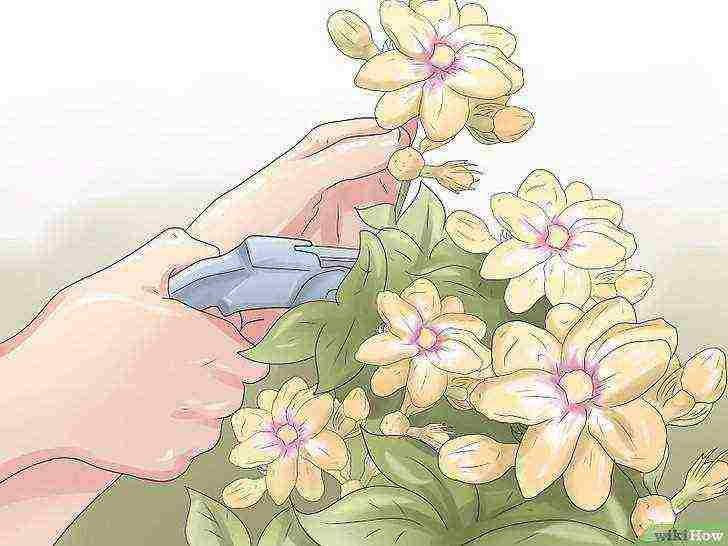 Cut the jasmine for a vase.
Cut the jasmine for a vase.
A jasmine vine or bush gives a lot of flowers in a season, you can decorate with them the situation. Use pruning shears to cut off abundantly flowering branches with leaves. Put them in water immediately to keep them fresh.
-
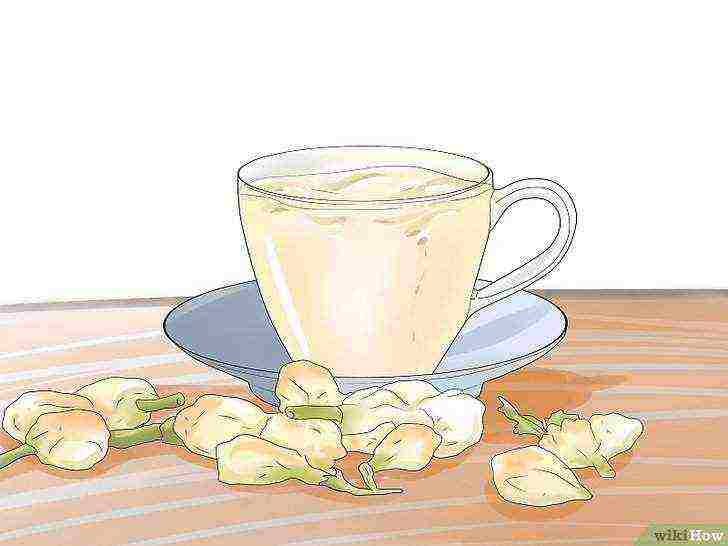 Collect jasmine buds for tea.
Collect jasmine buds for tea.
When jasmine blooms in spring and summer, you can make your own jasmine tea. Jasmine tea has healing properties, especially when combined with green tea.
Follow the steps below to make your own tea.
- Collect the buds of the plant early in the morning. Their aroma is richer at this particular time.
- Arrange them in one layer on a baking sheet.
- Heat the buds in the oven at the lowest heat setting (90 degrees or less). You can also dry the buds in a sunny window or dry room.
- Dry the buds completely. It will take about 3 hours in the oven. Try not to dry them in the oven.
- Leave the buds in a baking sheet overnight before storing them.
- Store the buds in a tightly closed container. When you need tea, add 1 teaspoon of the buds to boiling water. Leave to simmer for 4 minutes, then strain and enjoy the tea.
-
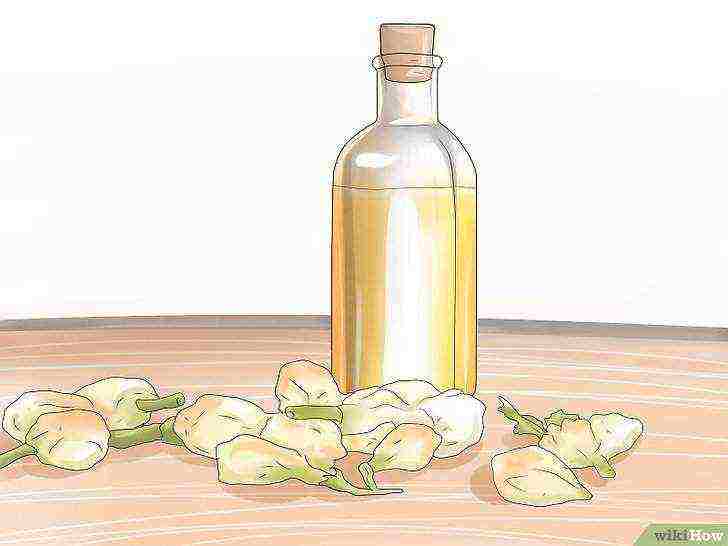 Use jasmine buds to make oil.
Use jasmine buds to make oil.
If you want to use the strong, sweet scent of jasmine as a perfume, you can make oil from the buds. You will need a glass jar with a tight lid and a base oil of your choice. Almond, olive, castor, jojoba are suitable.
Follow the procedures below to prepare the oil.
- Collect 1/4 cup fresh buds in the morning.
- Place the buds in a plastic bag and gently tap them with a hammer to release the oil.
- Place the buds in a jar and pour in ½ cup of base oil. Close the jar and leave in a cool, dark place for 24 hours.
- Strain the buds and sniff the oil. If you need a stronger aroma, repeat the process with fresh buds. Continue adding buds to the oil until you achieve the desired fragrance strength.
- Pour the oil into a dark glass bottle for long term storage. The oil can be used as a perfume or added to lotion, lip balm, and more.
Tips
- Jasmine can be propagated by apical cuttings in the summer.
- Under the right conditions, jasmine can grow to enormous sizes. Jasmine needs pinching to control growth. Prune the jasmine after flowering and throughout the summer to keep the long vines from getting tangled if they are not growing up the supports or trellises.
- Not all types of jasmine are scent. If smell is important to you, choose the appropriate variety.
- Plant jasmine close to your home, porch, or walkway to savor its rich aroma and admire the butterflies it attracts.
- Use a phosphate-rich fertilizer to maximize flowering.
What do you need
- Jasmine seedlings
- Garden shovel
- Gardening Gloves
- Compost
- Scoop
- Ties for tying plants
- Pine needles
Article Information
Categories: Gardens and vegetable gardens
In other languages:
English: Grow Jasmine, Español: cultivar jazmines, Italiano: Coltivare il Gelsomino, Português: Cultivar Jasmim, Deutsch: Jasmin anpflanzen, Français: faire pousser du jasmin, Bahasa Indonesia: Menanam Melati, Nederlands: Jasmijn kweken, Nederlands: Jasmijn kweken, Deutsch語: ジ ャ ス ミ ン を 育 て る, Tiếng Việt: Trồng hoa nhài
- Seal
- Edit
- Write a letter of thanks to the authors
This page has been viewed 28,035 times.
Was this helpful?
|
How to Grow Jasmine from Seeds? Someone has grown to share your experience, my daughter ordered seeds, but we don’t know how to plant.
Similar questions:
See also:
Your response:If you want to add a comment to the question or check with its author for details - not use this form, and click "Clarify / discuss the question" under the question text! |
Here you can ask questions,
|
Stefanotis (Madagascar jasmine) home care, cultivation and transplantation, reproduction
Stefanotis (Madagascar jasmine): home care, cultivation and transplantation, reproduction
Video: a memo for loving owners of stephanotis
Stefanotis is a beautiful tropical plant that is used at home to decorate large rooms and halls. Compliance with the requirements for caring for the plant, which are important for the plant, will make it possible to admire the juicy, shiny foliage and fragrant flowers of the climbing liana all year round. If you want to make Stephanotis bloom, do not forget to provide him with winter peace, do not repot it again, cut and feed in spring, but make sure that there is no excess nitrogen in the soil and fertilizer. This vine has long creeping stems, and with the correct formation of their growth, various green compositions are created with the help of supports, from compact to filling the entire space of the room with the luxury of a tropical forest.
How to grow jasmine from seeds or cuttings - planting and care
How to grow jasmine from seeds or cuttings - planting and care
Garden jasmine is considered to be one of the most beautiful shrubs. Due to its lush foliage, it is often used as a hedge. And its ability to bloom throughout the summer attracts flower growers. What's more, its fragrant flowers can be used to make delicious tea.
How to grow jasmine from seeds or cuttings? Almost all seeds that are used for reproduction require stratification. In the case of chubushnik, the seeds are mixed with prepared soil, consisting of part of river sand and part of peat. The moistened mixture is distributed in pots and removed to a cool place for 1.5-2 months.The air temperature should be low enough, not higher than +2 degrees. Periodically, the mixture should be moistened so that mold does not appear or the earth does not dry out.
In the spring, the seeds are sown in the prepared soil in boxes. And they are sent to a warm, bright room. Moisten periodically using a spray bottle or a fine-mesh watering can. The first shoots will appear on the 10th day. When the leaves appear and the seedlings get stronger, they can be dived into the open ground. Juveniles are very susceptible to direct sunlight and heat. Therefore, in the first summer, they should be shaded and make sure that the soil does not dry out on dry days.
If you want to propagate varietal jasmine, then it is better to use the vegetative method. Use green cuttings. Well-developed shoots of one year old are cut off with a heel from the old branch. Take only those shoots that do not have a hollow core inside. Since putrefactive processes can form there. Cuttings are planted in containers with prepared nutrient soil. And they are sent to a warm bright room or greenhouse. During rooting, cuttings require diffused light and good moisture. Therefore, they should be sprayed periodically.
Youngsters should be planted on well-prepared soil, in places with high humidity, but not persistent and swampy. A place should be chosen with good lighting. Already matured shrubs feel great in direct sunlight, grow luxuriantly and bloom profusely.
With good care, the bushes develop quickly enough. If the crown thickens too much, jasmine must be thinned out. Young shoots bloom much more abundantly. Pruning and crown formation should be done in early spring. And then the chubushnik will delight you with its fragrance and lush flowering all summer long.
You might also like:
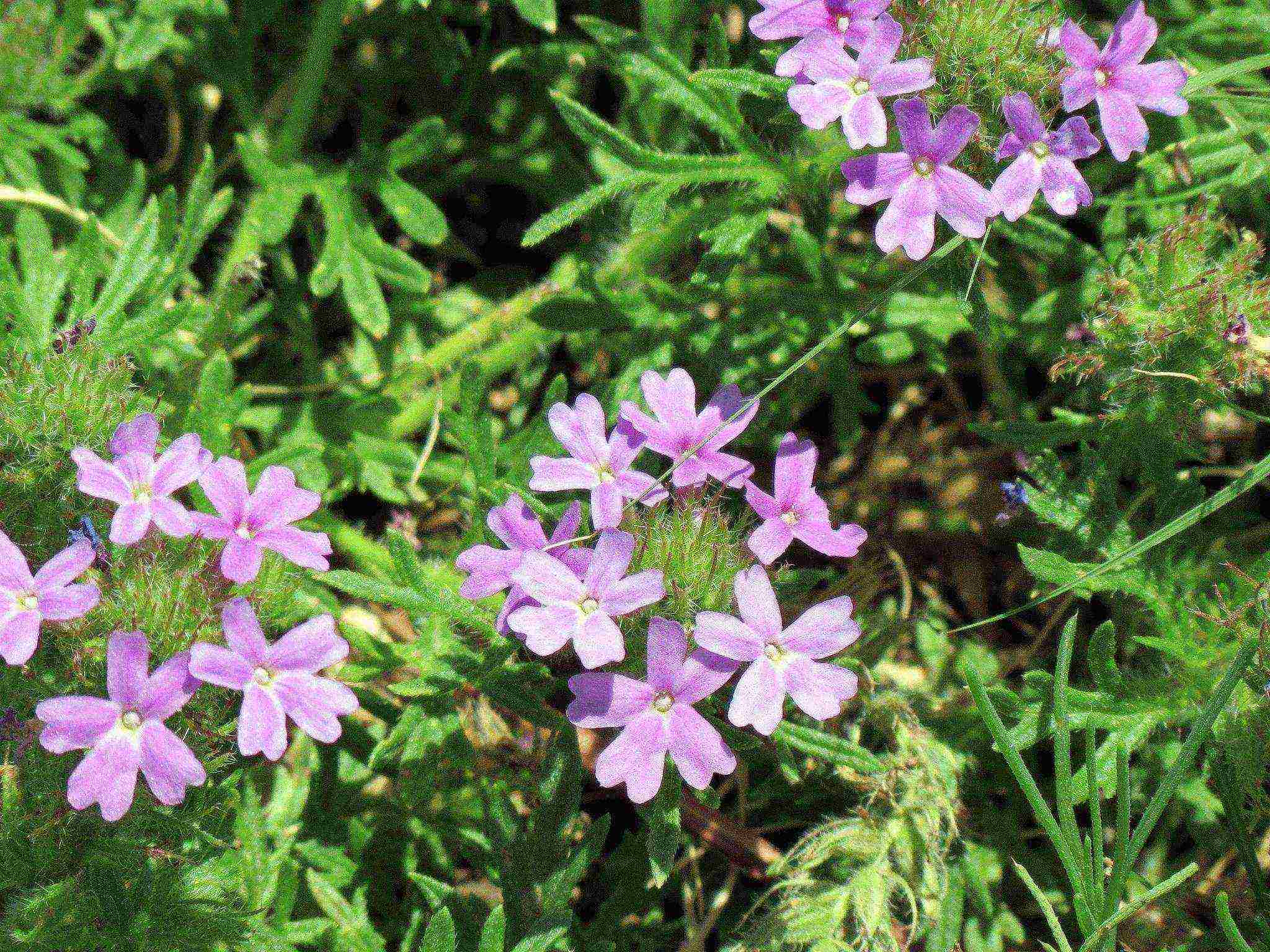 How to grow verbena from seeds at home - planting and care
How to grow verbena from seeds at home - planting and care How to grow ampelous petunia from seeds at home for seedlings
How to grow ampelous petunia from seeds at home for seedlings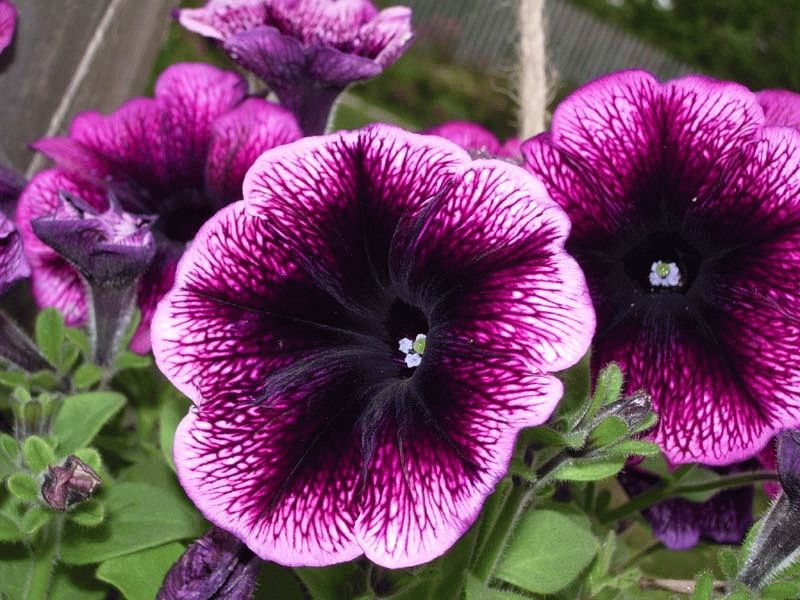 How to grow healthy petunia seedlings - planting and care
How to grow healthy petunia seedlings - planting and care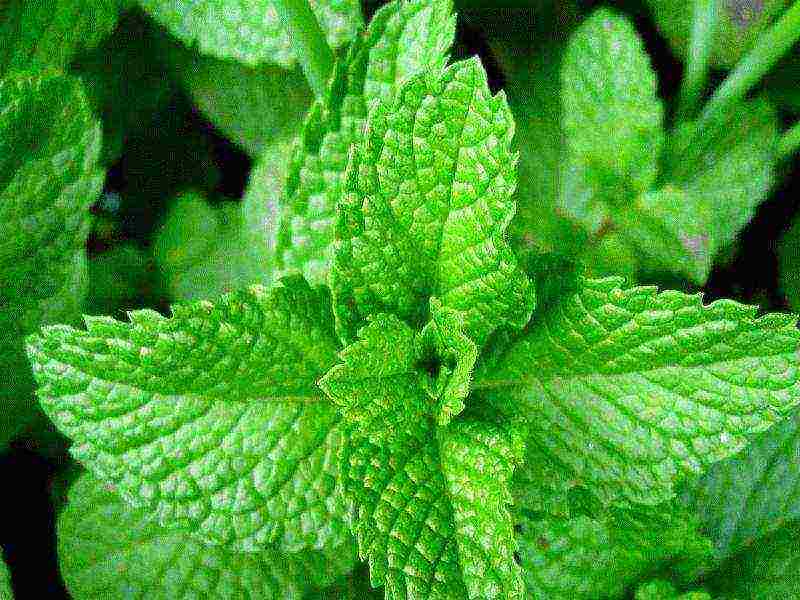 How to grow tarragon from seeds at home and in the country - planting and care
How to grow tarragon from seeds at home and in the country - planting and care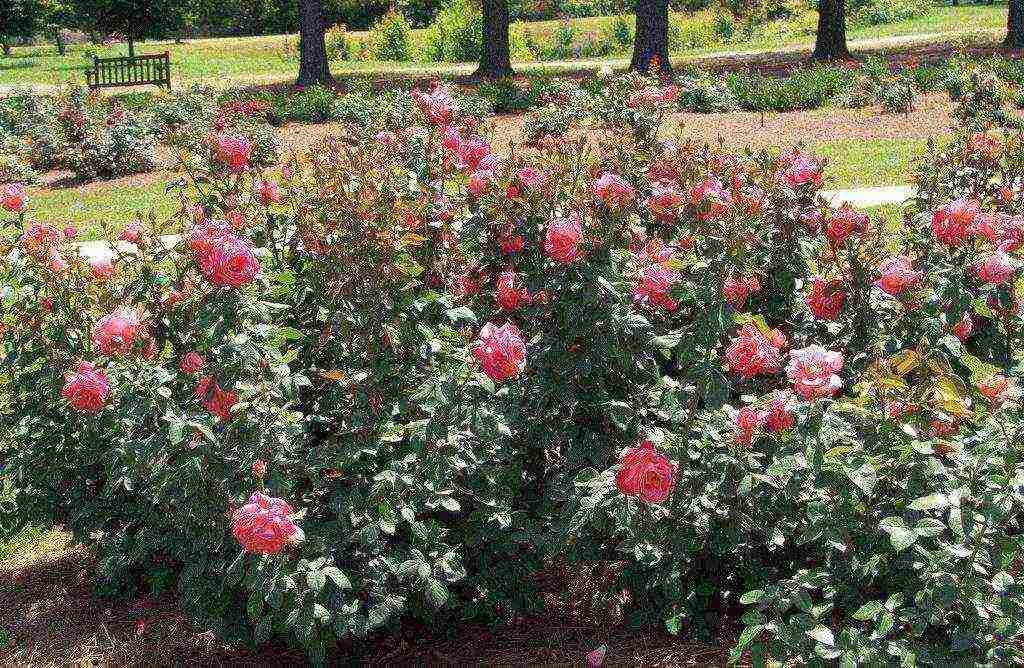 How to grow a hybrid tea rose from a cutting - planting and care
How to grow a hybrid tea rose from a cutting - planting and care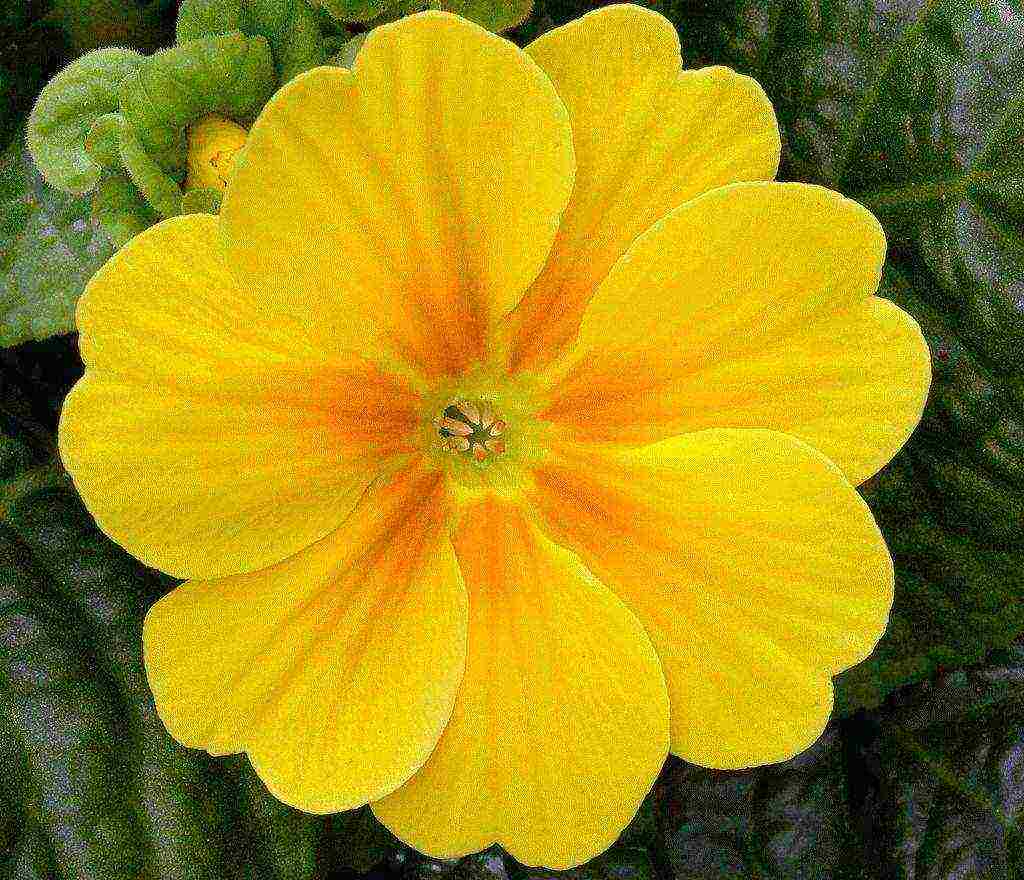 How to grow evening primrose from seeds at home and in the country - planting and care
How to grow evening primrose from seeds at home and in the country - planting and care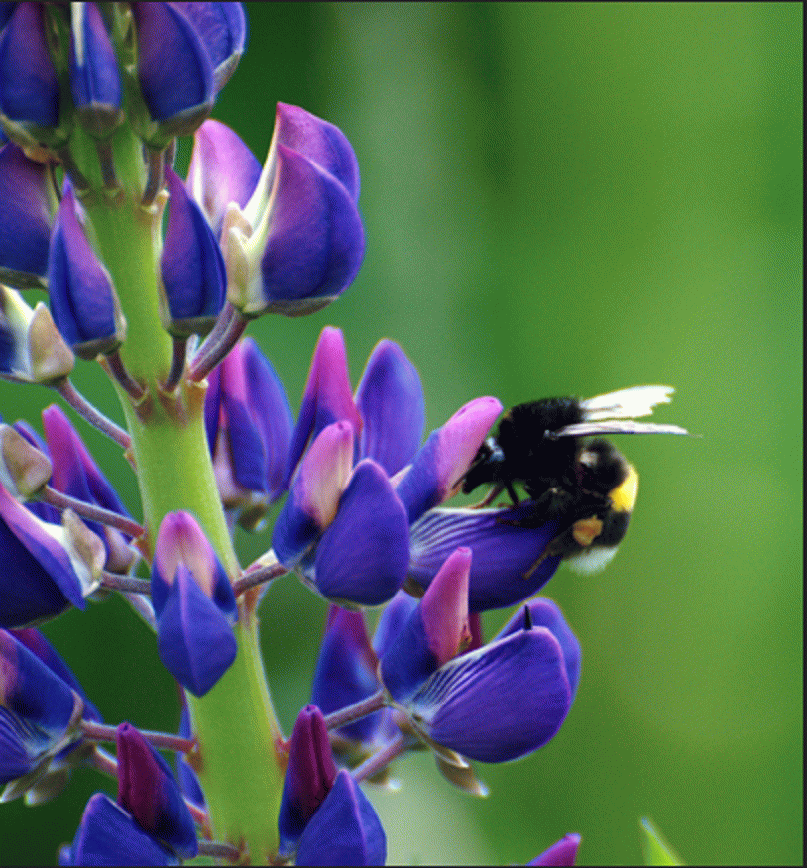 How to grow perennial lupine from seeds - planting and care
How to grow perennial lupine from seeds - planting and care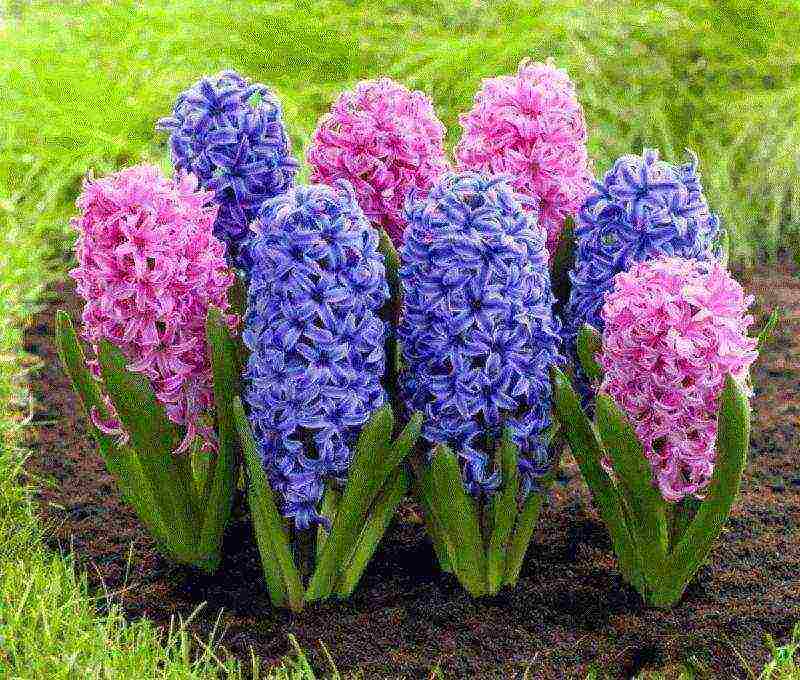 How to properly care for hyacinth before and after flowering? Ipomoea annual and perennial - planting and care
How to properly care for hyacinth before and after flowering? Ipomoea annual and perennial - planting and care
Indoor jasmine flower home care photo
Indoor jasmine flower: home care + photo!
In winter (dormant period), multi-flowered (polyantum) and large-flowered jasmine must be transferred to a cool place, the optimum temperature is 10-12 ° C. If it is warmer, then in spring and summer they will not bloom or will bloom little and weak.
If it is not possible to lower the temperature in the room or put it in a cool place, then spray more often to increase the humidity.
Jasmine sambac does not need a cold winter, keep it warm at 18-23 ° C.
The lower limit of the permissible temperature is 8 ° C, regardless of the season, otherwise the flower may die.
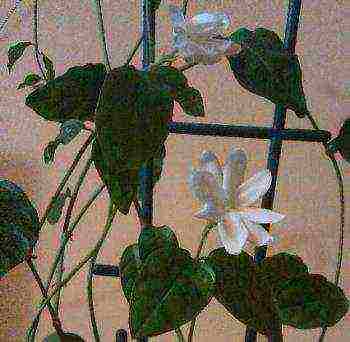 Jasmine sambac - flowering
Jasmine sambac - flowering
AIR HUMIDITY
In caring for jasmine, maintaining high humidity is an important factor. Low humidity inhibits the plant, makes it more vulnerable to diseases and pests, and also disrupts flowering.
In the spring and summer, spray indoor jasmine every 1-2 days with soft water, and if it is very hot and dry, then you can in the morning and evening.
In winter, the air is often dry from working heating devices, and the temperature is higher than necessary - spray it every 2-4 days. During flowering, you need to be very careful so that drops of water do not fall on the flowers, cover them with a cloth or hand.
In addition to spraying, use humidifiers or traditional methods.Put a wet towel on the battery, place a container of water or a pot near the pot on a tray with wet pebbles, expanded clay.
Attention! In the case of a cool wintering, the flower cannot be sprayed, as well as increase the humidity in any other way.
THE SOIL
Jasmine needs a loose and well-drained soil with a neutral (sambac) or slightly acidic reaction, pH 5.5-6.5 (large-flowered, multi-flowered (polyantum)). At the bottom of the pot, a 3-5 cm drainage layer is required, depending on its volume.
It is preferable to plant sambac jasmine in a ready-made universal substrate for roses or begonias, and for other species, these soil mixtures must be supplemented with 1/3 of the soil for azaleas.
We recommend reading: “SOIL MIXTURE COMPONENTS FOR INDOOR PLANTS, WHICH IS NECESSARY?
Care for indoor jasmine: watering, feeding, pruning, transplanting
The flower needs proper watering, feeding, pruning and transplanting. We will talk about these aspects of flower care further.
How to properly water indoor jasmine?
In the spring and summer, water the flower as soon as the topsoil dries 1-2 cm deep, approximately every 2-4 days. At this time (active growth and high temperature), it is important to keep the substrate in a slightly moist state constantly, without stagnant water and drying out. Starting in September, the need for moisture decreases and it is necessary to gradually reduce the frequency of watering. In autumn and winter, an excess of water is extremely undesirable, especially during cold wintering.
Water indoor jasmine only after the middle layer of the substrate begins to dry out, about once every 4-7 days.
If the room is very hot and dry, then watering is not recommended more often, but it is imperative to spray the plant in order to increase the humidity of the air and it could bloom.
General principle: the higher the temperature and the lower the humidity, the more often you need to water.
Water for watering a flower should be soft, settled and slightly warmer than room temperature.
Every 2nd to 4th watering (1-3 times a month), it is advisable to slightly acidify the water to maintain the optimum acidity of the soil. Add a teaspoon of apple cider vinegar to a quart of water.
In details: «WHAT WATER IS BETTER TO WATER ROOM FLOWERS?».
Top dressing and fertilizers
For a beautiful flowering and good development, the plant needs additional nutrients.
Jasmine flowers that bloom in spring and summer need to be fed from April to August. Jasmine sambac from April until the end of flowering.
Feed the flower every 8-12 days with liquid houseplant fertilizer.
We recommend reading:
«TYPES OF FERTILIZERS FOR ROOM FLOWERS». «HOME NATURAL FERTILIZERS - TOP-20!».
How and when to prune jasmine?
The plant responds well to formative pruning, moreover, regular holding is necessary to restrain growth and abundant flowering. Pruning stimulates the growth of new lateral shoots on which flowers appear.
In the beginning to mid-March (before the beginning of the growing season), trim all the shoots to about 40-60% of their length. Remove dry, elongated, damaged and poorly developed shoots completely.
In young indoor jasmine (shoots up to 50-60 cm in length), pinch every month from spring to autumn tops of the shoots so that they bush better.
Attention
Transfer
Young plants need to be transplanted annually using the transshipment method, and from 3-4 years of age, replant every 2-3 years as they grow.
Indoor jasmine is best replanted in the spring after flowering (March) and flower pruning. After transplanting, sprinkle the plant, the increased humidity will help to transfer stress more easily.
The new pot should not exceed the size of the previous one by more than 2-3 cm, otherwise there is a high probability of deterioration in the properties of the soil mixture and disruption of flower development. He loves when the substrate is almost completely filled with roots.
See also: «HOW IS IT CORRECT TO REPROT THE INDOOR PLANTS?»
How to make a support and tie a flower?
To grow jasmine, you need to make a support in the form of an arc of wire or plastic. Then, tilt the stem to one side of the arc and carefully wrap it around. Tie twine around the stem and support to secure the flower.
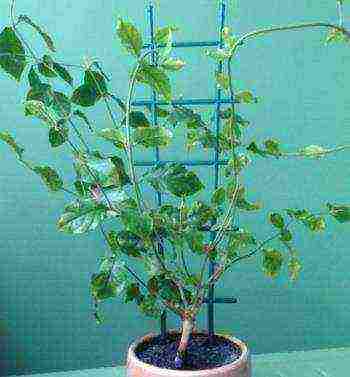 Jasmine support option
Jasmine support option
Reproduction of indoor jasmine
The plant can be propagated by cuttings and layering. Each of the methods has its own merits.
Cuttings
The most productive way, but at the same time laborious and requires certain skills. Jasmine propagation by cuttings is more suitable for experienced florists or for those who need a large number of copies.
It is convenient to propagate indoor jasmine by cuttings in spring after pruning, or from April to July.
In the spring, take a lignified, mature, powerful shoot. Cut off its top with 2-3 internodes, length 10-14 cm, lower cut at an acute angle. For summer cuttings, take young green shoots. Plant the cuttings in a moist soil mixture (peat, sand - 1: 1 or just sand) 1.5-2 cm deep and cover with foil or glass. You can also place the cuttings in a container with water, and after the roots are formed, plant them in a nutritious substrate. Spray and air the cuttings daily. Roots are usually formed after 30-40 days. Plant the plants in separate cups (3-5 cm diameter), potting soil (leafy earth (peat), sand - 3: 1) and place in a bright place without direct sunlight. Spray the plants daily to keep the substrate slightly damp at all times. When the roots are all over the potting mix, transplant the plants into a pot (8-10 cm diameter). Then repot the flower annually until 3-4 years of age.
Rules and Tips
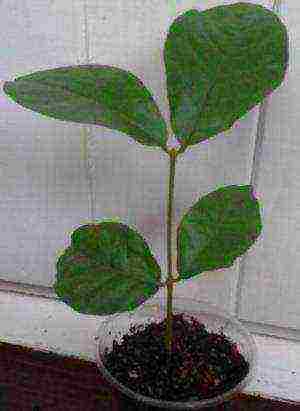 Rooted stalk of Sambac jasmine
Rooted stalk of Sambac jasmine
Layers
Convenient and easy breeding method. Ideal if you need a small number of young flowers.
In April - May (also possible in summer), make a small incision on the extreme shoot, dig it into a small hole and sprinkle it on top with soil. Water the cut site regularly, when the young growth begins to grow (autumn, spring), separate the cut from the mother plant and plant in a separate pot.
For more details, see here: "VEGETATIVE REPRODUCTION OF INDOOR PLANTS - OVERVIEW"
Pests and diseases
